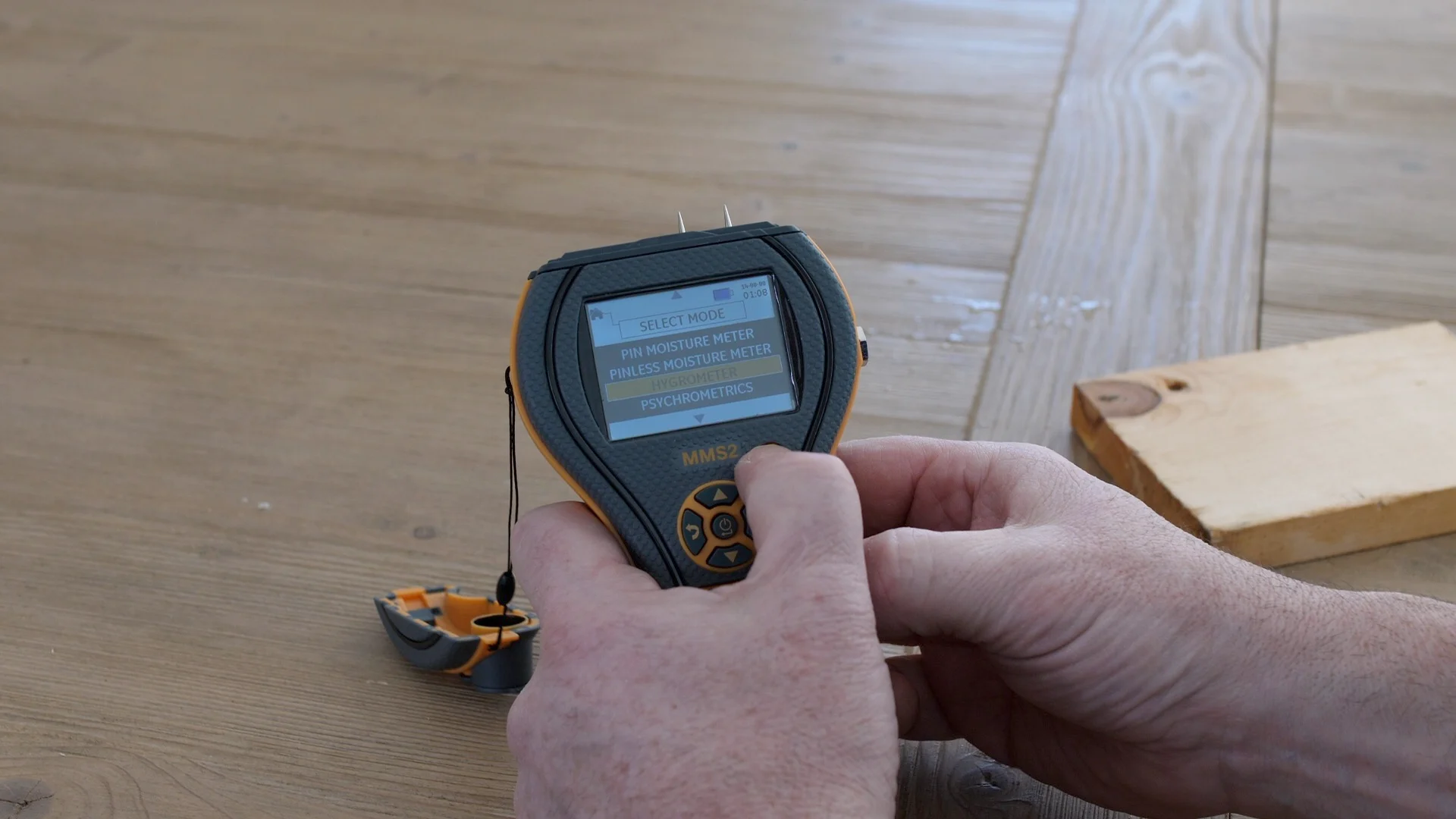Hurricane Damage Restoration & Moisture Meter Preparation
Chris Ranwell
Aug 26, 2021 8:00:00 AM

One of the most powerful forces in nature, hurricanes aren’t to be messed with.
With intense winds, as much as 20” of rain at a time, and flooding, hurricanes can cause major damage across a large area.
For building restoration professionals in hurricane-prone areas, hurricane season -- which runs from the beginning of June to the end of November -- is an abruptly busy time. After a storm, buildings of all types may have damage ranging from ripped-off roofs to broken windows and water intrusion.
Moisture meters are an invaluable tool in beginning the restoration and recovery processes after a destructive hurricane. The best moisture meter for restoration inspections after a major storm is one that’s dependable and takes accurate readings. Taking time to inspect your meter before putting it to work saves you time and hassle during a survey.
With the 2021 hurricane season here, are your moisture meters ready?
Preparing Your Restoration Moisture Meter for Post-Hurricane Inspections
The best time to prepare for a deluge of flood inspection calls that follow a hurricane is long before the storm makes landfall and wreaks havoc..
Your moisture meter(s) should be as ready to go as you are.
When getting your meter ready for what could be a very heavy workload, make sure to:
- Check components & accessories
- Check Calibration
- Test, then test again
Check Components & Accessories
A good once-over of your moisture meter and any accessories, such as deep wall probes and hammer electrodes, goes a long way. You’ll catch any small issues that could stop your restoration inspection before you even start. Making sure the measurement device and its components are functional means it’s dependable when you need it to be.
A few places to inspect include:
- Batteries -- Are your meter’s batteries at full capacity or nearly dead? Nothing stops an inspection faster than a meter that runs out of power.
- Pins -- Are your pin-type meter’s probes clean, pointed, and in one piece? The same goes for pins on moisture meter attachments. Probes that are dull or covered in residue take inaccurate readings. So do pins that are bent or broken.
- Contact plate -- Is it clean? Like pins on a pin-type meter, dirt and buildup on a pinless moisture meter’s contact plate make for unreliable measurements.
Check Calibration
Calibration makes all the difference in taking accurate readings, regardless of the type of meter you’re using.
Both pin-type and pinless moisture meters are easy to calibrate -- it only takes a few seconds. Some meters even have a built-in calibration function, making the process automated.
Test, Then Test Again
With your meter calibrated and functioning, it’s always a good idea to take a few test measurements before arriving on-site for a restoration inspection.
Like calibration, the testing process is simple -- just try out the meter on a material or area with potential moisture.
Even if measurements are what you expect, test again. An extra test doubles your confidence that the meter is functioning as it should.
Being in “Go Mode” for a Water Damage Inspection
Having your moisture meter prepped and ready to go is one thing during hurricane season. But what about everything else you and your team will need to complete a restoration moisture survey? Having a tool bag that’s adequately stocked with those “extra” items is the next-most important thing you can do before a hurricane hits.
Your toolkit should include:
- Moisture meters & a hygrometer
- A camera
- Spare parts
1. Moisture Meters and a Hygrometer
While it goes without saying that you’ll need a moisture meter to assess water damage, it’s best to have both a pin-type and pinless moisture meter in your toolkit. Pin-type meters allow you to test for actual moisture content within a material, while pinless moisture meters help you locate moisture and confirm its presence.
Another key tool in a flood damage restoration inspection, a hygrometer tests for relative humidity. The device’s readings help you initially determine the extent of moisture’s presence within a space as well as the outputs from dehumidifiers.
It’s also critical that you have enough moisture meters and hygrometers to outfit your crew. Nothing stifles your ability to quickly complete a water damage inspection than not having the appropriate tools on-hand. If your thermo-hygrometer has replaceable probes then it's best to have a spare humidity probe, too.
2. A Camera
A building owner’s recovery efforts from hurricane damage usually involve tapping into their insurance policy’s benefits. Insurers are very particular about the information they need to process a claim.
Aside from your moisture inspection report, most insurers require additional proof of damage. Photos go a long way to not only verify that a building was inspected, but also to show the extent of any damage.
3. Spare Parts
Even though you inspected your moisture meter(s) and its components to make sure everything is in working order, having spare parts equals peace of mind. Should a component fail or the meter’s batteries lose their charge, your inspection isn’t on-hold.
Your “go” bag should include extra:
- Batteries
- Pins
- Specialty probes
Failure to Prepare Is Preparing to Fail
Flood and water damage restoration inspections after a hurricane are one of the first steps of recovery. Whether your inspection is for home restoration or repairs to a commercial or industrial space, being ready with the right tools and equipment helps your customer start that process.
Having your restoration moisture meters prepared to respond to calls not only allows you to move quickly when the time comes, but also have the right tools ready.
Upgrade Your Preparedness for Restoration Inspections
Our Restoration Kit has everything you’ll need to conduct post-hurricane flood and water damage restoration inspections.
